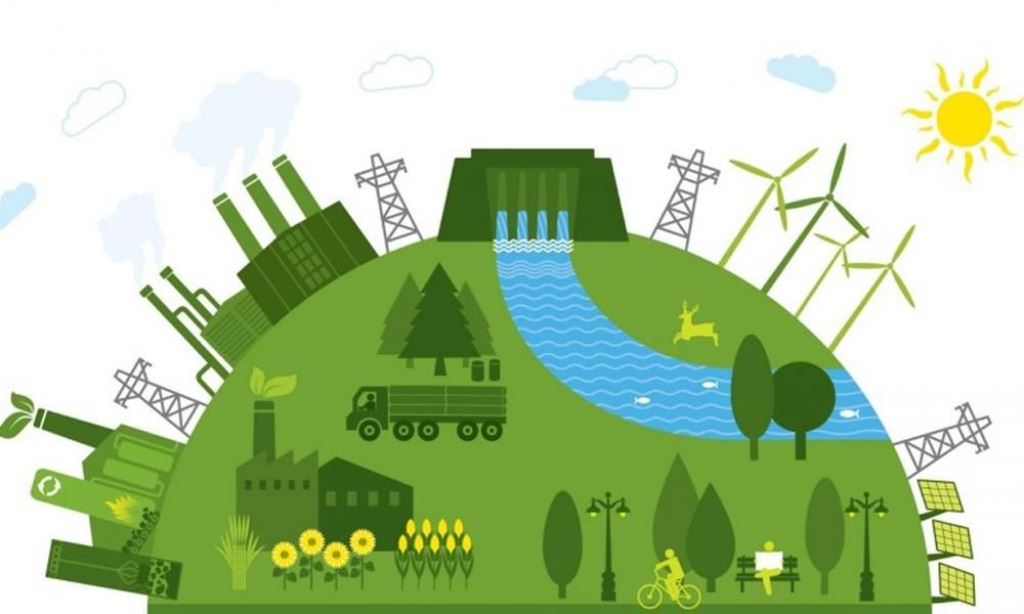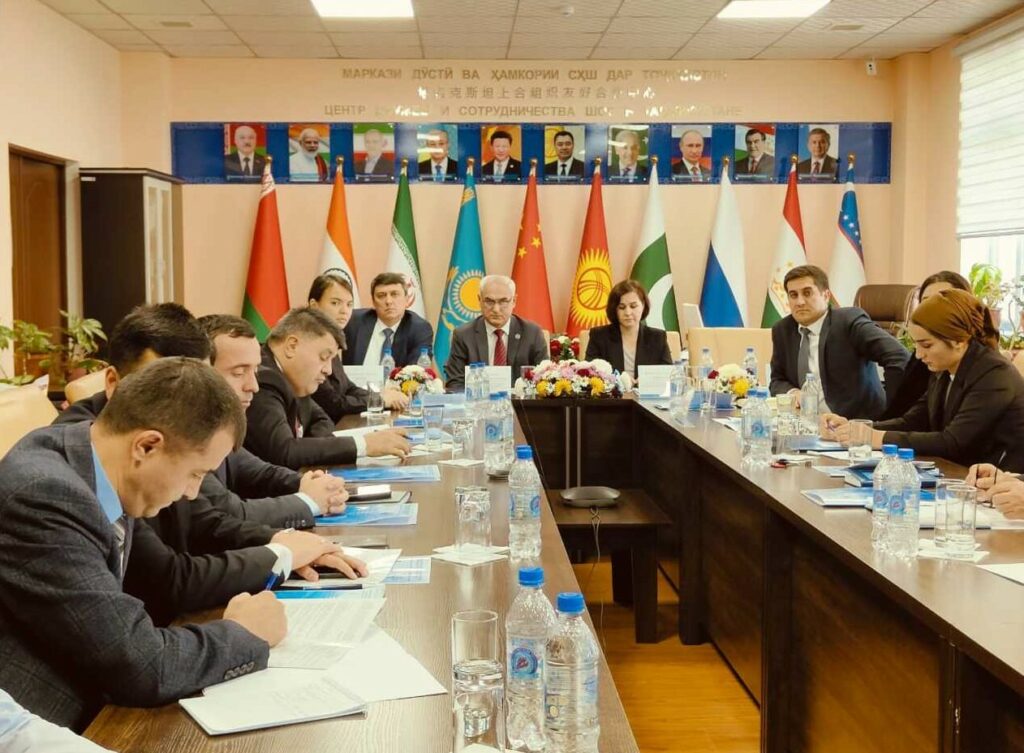They want to turn Tajikistan into a “green country” by 2037. What are they going to do to achieve this?
The Central Asian republics discussed the possibilities of switching to “green” energy in Dushanbe, and we learned the share of renewable energy production in the countries of the region.

The three-day SPECA Economic Forum, dedicated to sustainable development and green economy, started on November 26 at the National Library of Tajikistan.
The Forum is attended by government delegations from SPECA member countries, representatives of the private sector and international organizations, the total number of which exceeds 100 people.
On the first day of the Forum, issues related to green development, efficient use of water resources, climate change and minimization of its impacts, use of environmentally friendly transport, implementation of sustainable development goals, and simplification of trade procedures in the region were discussed.
SPECA (United Nations Special Economic Programme for the Economies of Central Asia and Azerbaijan) was established in 1998 on the initiative of the UN. The main goal is to promote economic development and strengthen regional cooperation. Over the years, the UN Special Economic Programme for the Economies of Central Asia and Azerbaijan has paid special attention to such important issues as sustainable trade, digitalization, water resources, energy and transport.
The heads of delegations from countries in the region spoke at the Forum, informing participants, in particular, about the measures being taken to transition to renewable energy sources.
Deputy Minister of Economic Development and Trade of Tajikistan Akhliddin Nuriddinzoda:
– Tajikistan has adopted the Green Economy Development Strategy for 2023–2037, which envisages achieving ambitious goals for the introduction of sustainable practices in all sectors of the country’s economy.
By 2033, the republic plans to produce at least 1,000 megawatts of renewable energy from solar and wind sources, complementing ongoing hydropower development projects.
As part of these efforts, Tajikistan is implementing several projects, including major investments in hydropower projects such as the Rogun HPP, as well as the modernization of the Nurek, Kairokkum and Sarband HPPs.
These measures will increase energy production by an additional 4,000 megawatts by 2032, which will ensure our country’s leadership in the field of renewable energy and will allow us to switch completely to electricity obtained from renewable sources.
By 2037, we aim to transform Tajikistan into a “green country” with a sustainable, diversified economy that integrates green technologies and environmentally friendly practices across all sectors.
We call on SPECA member states to cooperate in implementing joint projects in the field of renewable energy, green finance, sustainable transport corridors and environmentally friendly agriculture, Nuriddinzoda said.

According to the country’s statistical agency, 94.11% (over 17.5 billion kWh) of electricity in the country over the first 10 months of this year was generated by hydroelectric power plants, over 5.88% (about 1.1 billion kWh) by thermal power plants, and just over 0.005% (801.4 million kWh) by solar power plants.
Vice Minister of National Economy of Kazakhstan Arman Kasenov:
– In 2022, Kazakhstan adopted a Green Economy Strategy, setting an ambitious goal of reducing carbon dioxide emissions to 15% by 2030.
Today, the share of “green” energy in total production in Kazakhstan is about 3%. By 2030, it is planned to increase its production to 15% – by seven additional GW, and carbon emissions by this year are also planned to be reduced by at least 15%.
In addition, by 2060, Kazakhstan plans to achieve zero greenhouse gas emissions.
The majority of carbon dioxide emissions in Kazakhstan come from energy , Kasenov said.
He cited data from the Energy Institute. In 2024, the energy sector in the country will account for 77% of all greenhouse gas emissions. This is due to the use of fossil hydrocarbon fuels, which emit harmful substances when burned in power plant furnaces: mainly coal and oil derivatives.
There are currently 148 renewable energy facilities operating in Kazakhstan with a total capacity of 2.9 megawatts.
According to Qazstat, in 2023, the share of renewable energy sources (RES) in the total volume of electricity production amounted to 5.8%.
First Deputy Minister of Economy and Commerce of Kyrgyzstan Choro Seyitov focused on issues of harmonizing economic growth with environmental sustainability.
It calls for the active implementation of innovations aimed at increasing efficiency, reducing carbon emissions and preserving natural resources.
Choro Seyitov noted the need to further strengthen the partnership and find new ways of cooperation. He proposed a number of initiatives aimed at sustainable development, including:
– implementation of the program for the development of the “green economy”;
– introduction of the institute of extended responsibility of producers and importers;
– development of hydropower and renewable energy sources;
– construction of the Kambarata HPP-1 in partnership with Kazakhstan and Uzbekistan;
– a mechanism for exchanging external debt for climate and sustainable projects.
According to official data, there are 7 large and 16 small hydroelectric power plants operating in Kyrgyzstan. Hydroelectric power plants generate the bulk of electricity, accounting for up to 92% of output.

Deputy Minister of Finance and Economy of Turkmenistan Babaniyoz Yalakov:
– An important direction in ensuring sustainable development of the economy of Turkmenistan, environmental protection, and rational use of natural resources is the development of renewable energy sources, primarily solar and wind energy.
With significant wind and solar energy potential, Turkmenistan has the potential to create a balanced energy system with a reasonable share of renewable sources.
In order to protect the environment, a hybrid solar-wind power plant with a capacity of 10 megawatts has been created in Turkmenistan for the first time, he said.
Previously, according to official data, almost 100% of electricity in Turkmenistan was generated at power plants running on fossil fuels, mainly natural gas.
There were 12 power plants in the country with a capacity of about 7 megawatts, where 51 turbine units were installed, of which 39 were gas turbines and 12 were steam turbines.
Advisor to the Minister of Investment, Industry and Trade of Uzbekistan Abdulla Khashimov noted that by 2030 the country plans to reduce greenhouse gas emissions by 35%.
To achieve this goal, he said, an increase in the production capacity of renewable energy sources is expected: by 2030, their share in the total volume of electricity production in the country is expected to reach 25%.
He stressed that the share of “green” energy is planned to increase to 40% by 2030.
According to the Ministry of Energy of the Republic of Uzbekistan, currently the bulk of generating capacity (about 85%) is made up of thermal power plants.
For the period up to 2030, it is planned to implement large investment projects to increase generating capacity with the construction of new power units with a total capacity of about 27 GW for a total amount of about $35 billion. And with the decommissioning of morally and physically obsolete power units at thermal power plants with a total capacity of 6.4 GW.
Particular attention is paid to the construction of the first nuclear power plant in Uzbekistan with a capacity of 2.4 GW.
As part of the transition to a “green” economy, the priority direction for the development of the electric power industry is the creation of modern solar and wind power plants with a total capacity of 6.7 GW.
At the beginning of 2024, the share of wind energy in the total volume was almost 10%.



